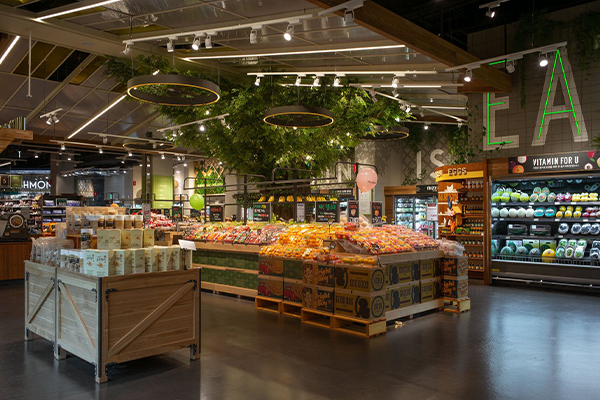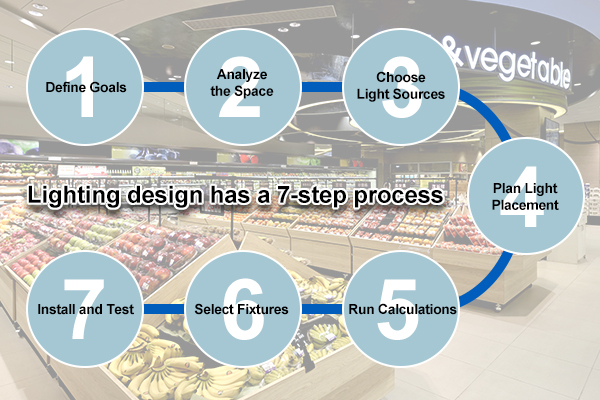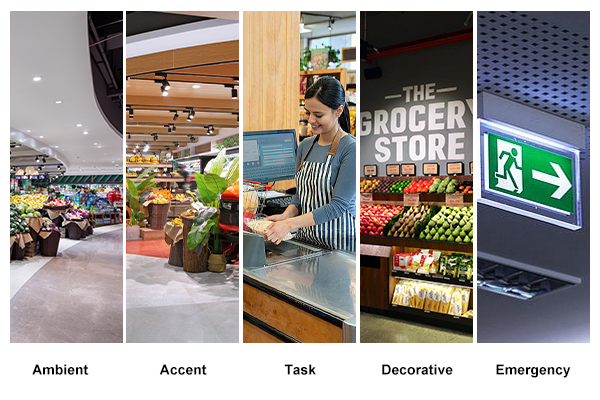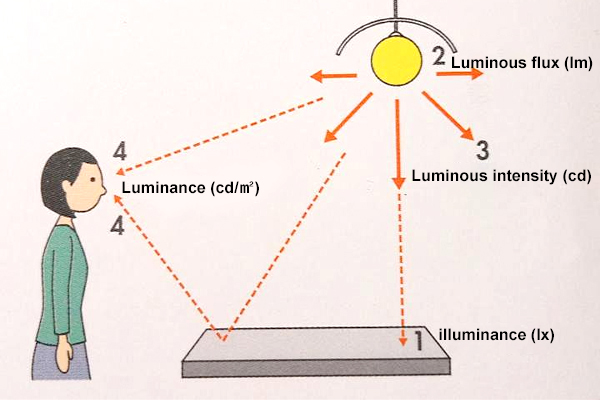A Quick Guide to Supermarket Lighting Design?
Product Introduction
A Quick Guide to Supermarket Lighting Design?

Supermarket lighting looks simple. But if it’s wrong, people stop buying.
Effective supermarket lighting follows clear steps and rules to guide design and improve customer experience.
Good lighting boosts sales and comfort. Let’s break it down step by step.
What are the 7 steps in the lighting design process?
Bad lighting makes customers feel uncomfortable. A step-by-step method helps avoid that.
Lighting design has a 7-step process: from understanding goals to installing the lights.

Dive Deeper: Why do we need a process?
When I first worked on a store renovation, I ignored some of these steps. The result? Flat, dull light that made everything look grey. Since then, I always follow this basic path:
Step-by-Step Lighting Design Process
|
Step |
Description |
|
1. Define Goals |
What do we want the lighting to do? Highlight products? Set a mood? |
|
2. Analyze the Space |
Ceiling height, layout, shelf placement — these affect light spread. |
|
3. Choose Light Sources |
LED? Fluorescent? Each has pros and cons. |
|
4. Plan Light Placement |
Even coverage vs. spotlight effects. |
|
5. Run Calculations |
Use lighting software to test brightness and uniformity. |
|
6. Select Fixtures |
Pick lights that match the design, budget, and function. |
|
7. Install and Test |
Install fixtures and check for glare, shadows, and blind spots. |
How does this help?
Following a process avoids guesswork. You can align lighting with shopper habits. It also helps store staff. Bright stock rooms and soft café corners each need different lights.
We must balance three things:
- Energy use
- Customer comfort
- Visual appeal
Missing one step leads to mistakes. I once skipped calculations. That store had perfect aisles — except the entrance, which looked like a cave.
What type of lighting do grocery stores use?
Stores want to save money and sell more. The right lights help both.
Most grocery stores use a mix of ambient, accent, and task lighting.

Dive Deeper: Why use different lights?
Think about walking into a store. First, you see the wide aisles — that’s ambient light. Then your eyes catch a cake display under a warm spotlight — that’s accent light. And at checkout, bright light helps staff scan items — that’s task lighting.
Types of Lighting Used
|
Lighting Type |
Purpose |
Common Placement |
|
Ambient |
General lighting for entire store |
Ceiling grid |
|
Accent |
Draw attention to items |
Display shelves, bakery, meat counters |
|
Task |
Support specific tasks |
Checkout lanes, prep areas |
|
Decorative |
Create a mood or match brand |
Café zones, entrances |
|
Emergency |
Safety and codes |
Exits, stairwells |
Why do stores mix them?
Because different zones need different feelings. A fresh produce section may use high CRI LED lights to make fruits look more colorful. Meat counters may use warm lighting to give freshness.
A real case
In one project, we lit the produce section with adjustable LED track lighting. Sales of apples and berries jumped in the first month. Color clarity made the difference. The same store used cool-white light in the frozen section to reinforce the cold feeling.
Tips from experience
- Avoid over-lighting. It causes glare.
- Use directional lighting to save energy.
- Check color rendering index (CRI) for food zones.
What is the rule of thumb for lighting?
Design rules reduce risk. They guide us when decisions are unclear.
A common rule is: 500 lux for general areas, more for tasks or displays.

Dive Deeper: What do these numbers mean?
Lux measures brightness. One lux = one lumen per square meter. But most people don’t carry a lux meter. That’s why rules of thumb help.
Key Lighting Guidelines
|
Area |
Recommended Lux |
Notes |
|
Aisles |
300–500 lux |
Uniform lighting avoids shadows |
|
Checkout |
500–700 lux |
Supports accuracy and speed |
|
Display Cases |
700–1000 lux |
Makes items pop |
|
Storage Room |
200–300 lux |
Just enough to work safely |
What happens if we ignore this?
I once consulted for a local grocer who used one light level everywhere. Customers avoided the freezer section. It felt dim and cold — in a bad way. After we boosted that zone to 800 lux and added directional lighting, sales recovered.
Balancing act
Higher lux = better visibility, but also higher cost. That’s why stores often use lighting zones and dimmable systems.
Also, daylight matters. A store with skylights may need fewer fixtures during the day. I once added daylight sensors to a suburban store. They cut power use by 25% without changing the customer experience.
Supermarket lighting works best when it’s planned step-by-step and adjusted for each space.
